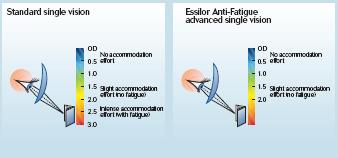 Bill Harvey describes a new lens from Essilor aimed at the pre-presbyope suffering from visual fatigue
Bill Harvey describes a new lens from Essilor aimed at the pre-presbyope suffering from visual fatigue
As a +2D hypermetrope well into his 41st year, I am very conscious of the insidious onset of presbyopia. I was, therefore, intrigued by the new Essilor Anti-Fatigue lens which was launched in the UK on the June 5.
The lens is marketed as suitable for the pre-presbyope (defined by the company as 20 to 45 year-olds) who is experiencing visual fatigue or who has a 'very heavy near vision load', say three or more hours of intermediate or near work per day. One might argue this was the majority of the UK workforce today.
Register now to continue reading
Thank you for visiting Optician Online. Register now to access up to 10 news and opinion articles a month.
Register
Already have an account? Sign in here
